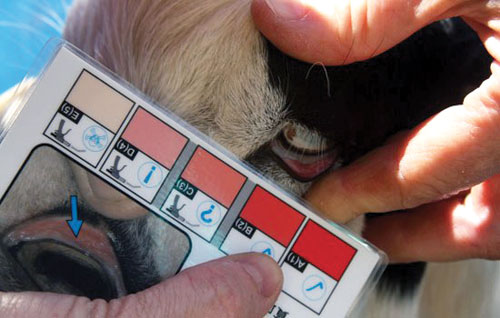The holidays are over and we survived. Now, we look ahead to make the New Year even better. This time of the year we need to think about getting high magnesium mineral into our cows. Yes, it is grass tetany season again. I like a 10 percent mag. mineral offered to our cows from Christmas until sometime in May. This will help prevent most of the grass tetany.
Now another problem I see a lot of this time of year is prolapses. We actually have five different prolapses: vaginal, cervical, rectal, uterine and preputial. The only one that is an emergency is the uterine. Some of these die no matter what you do. This prolapse happens immediately after calving. For the uterus to be turned wrong side out and be on the outside of the cow, it cannot have a calf in it. Generally this happens with the cow pushing too hard to calve and the horn of the uterus starts to telescope into itself. With a mighty push trying to get the calf delivered the uterus comes right on out right after the calf does, or within a little bit of time. The sooner we get this cleaned up and put back in, the better chance we have for the cow to live.
The other prolapses can be put back in most any time, but the fresher the easier especially, with the preputial on bulls. This prolapse is where the bull has dropped out part of his sheath. I have been able to put these back in and had the bull stay in service. I have also had to circumcise these bulls. If your bull is not an eared breed we may end up too short to service cows. Bulls are supposed to drop their sample in the cranial vault of the vagina. If we cut too much off the sheath it will shorten the penis and he will not be able to deliver the sample in this area to breed a cow. Eared breeds, such as, Brahma crosses generally have enough sheath that this can be accommodated. I have done this on Angus bulls, though. But, it was very difficult.
Now on the cervical and vaginal prolapses. These normally happen when a cow has torn her ligaments that hold her in. We can also have a genetic predisposition for this. I have even seen this in feedlot heifers. These cows vaginally and/or cervically prolapsing all need to be on the cull list. They will do it again, and I will charge you the same money again to fix it and say, “I told you so.” I have also had cows trying to prolapse and maybe even show a small pink ball at the vulva while lying down. If it will go back in when the get up, I adjust the ration to more grain and less hay. This will remove some of the rumen fill to reduce the straining. We can get the same energy out of a smaller amount of grain than we do with hay. But, we still need to feed at least 6-8 pounds of dry matter from per day. This will keep the rumen working properly and prevent other sickness. But, 6-8 pounds of hay is a lot less than 20-50 pounds, normally what they will eat. Some bad vaginal prolapses will have to have this feeding adjustment done anyway. If we think about it, we only have so much room in the belly of a cow.






